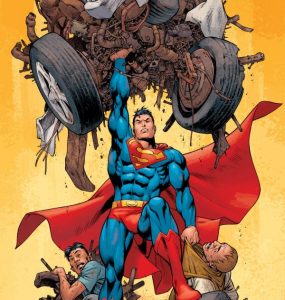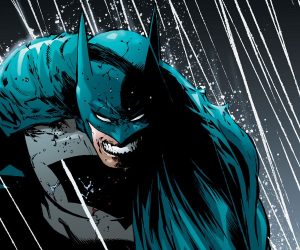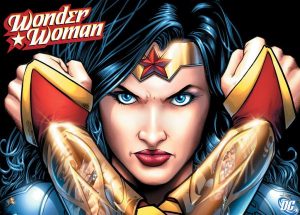The History of The DC Comics Universe
The history of the contemporary DC Comics universe goes far back in the past, or rather, into the 1930s, and has undergone a number of development stages in the meantime. Therefore it is difficult for a newcomer to understand the influences of the past. In the following we present you a small round trip and thus relevant events in the history of Superman, Batman & Co.!
If one speaks of the founding of today’s DC, it is often referred to the person Malcolm Wheeler-Nicholson, who in his day founded the so-called National Allied Publications (1934). One year later, the first series was released under this name: New Fun: The Big Comic Magazine. The pioneer of the classical Comichefte was born, who focused primarily on the narrative of different, wonderful stories and thus did not have a precisely defined face.
The second series New Comics (1935), which was soon renamed Adventure Comics, focused on the narrative of exciting stories and, for the first time, the motif of the superheroes in the 1940s, although it was told from a collection of heroes. While the Adventure Comics were released, the founder of the National Allied Publications was forced to work with Harry Donenfeld due to increased debts, the consequence of which was the founding of Detective Comics, Inc. as well as the series of the same name. For a long time, Nicholson did not rule out this state of affairs, which dissolves the partnership and bought up his built National Allied Publications by Detective Comics.

© DC Comics
The image of the 30s was rounded off by the introduction of another series called Action Comics. Already the first version of the series included the costume hero Superman, the well-known colleagues such as Batman, Wonder Women, Flash and Green Lantern followed. Not for nothing, this decade also speaks of the Golden Age of Superheldencomics, because the response was overwhelmingly positive, even if this was soon to change.
The 40s were basically characterized by a phase of organizational activities. National Allied Publications teamed up with Detective Comics, Inc. to form National Publications, which, on the other hand, became National Periodical Publications with Independent News, an already owned publisher, and All-American Publications (1944). “DC Superman”, the well-known face of the comic series, was unofficially known at this time. After the end of the Second World War, however, the reader lost the interest in the great mass of superhelves, which were gradually presented, whereupon they decided to concentrate on other genres, while only the most famous superheroes were continued Phase of rest.
In the fifties, they decided to try a new experiment and began to revive Flash and Green Lantern in a new version, the first of which proved to be a great success. DC’s highlight was reflected in the founding of the Justice League of America, which focused on the merger of the most famous heroes and was often to be adapted in the coming decades.
The 60s are referred to retrospectively as the Silver Age of Superheldencomics, as new heroes were created in this decade, the parallel publication with MARVEL being particularly striking, which had been forced by the success of DC to formulate or to form competition. In terms of content, the increased use of female characters, which were characterized not only by extreme feminist tendencies. Only a few examples are characters like Spider-Woman, on the side of MARVEL, or Power Girl. The merger of Warner Bros. and National Books rounded off the time span.

© DC Comics
The impact of this culminated in the 70s, when one officially decided to change the publishing house to today’s DC Comics, Inc. Old veterans of the publishing house were replaced by young employees to bring fresh air into the creation of the stories by exposing old heroes to new influences or by creating entirely new ones. As a problem, on the other hand, the fact that these newcomers were strongly influenced by the organizational concept of MARVEL, which gradually began to network the individual stories, should turn out to be a problem. Paralleluniversen were created or new earths, in order to establish the connection. This, however, should prove to be a mistake when one slowly but surely lost control over the whole. The overall transaction became too complex and too confusing to be understood by the average reader, which lost the interest in the comics suddenly. This was also the beginning of the so-called Bronze Age of the Superheldencomics, whose influences should last until the next decade.
As a counter-measure, in the early 1980s, the abolition of all these parallel universes began to create a single world or a single earth. In order to achieve this goal, the Crisis on Infinite Earths appeared, which ensured a complete new beginning. New editions of individual characters have been created, of which especially the Man of Steel series highlighted, as the history of Supermans got a new face. Officially speaking in this context, it is also generally known as the beginning of the modern age of superheldencomics, and as the whole organization of the organization was characterized by an incredible degree of freedom for readers and artists, MARVEL easily came out of its throne. Watchmen (1986) as well as The Dark Knight returns (1986/1987) enjoyed greater popularity and clarified the success of DC.
The general upturn in the industry picked up in the 1990s as readers became aware of the growing attention. It can almost be said that the books have since been actively regarded as collectors. Solitary issues and gaps that arose after the Crisis on Infinite Earths and which have been dying in recent years have been rectified by Zero Hours (1994), while a recent significant upswing by the death of Superman (1992/1993) Crippling Batman (1993/1994). The economic downturn, however, stifled the joy in combination with increasing disinterest in germination, which led to a phase of depression.

© DC Comics
In the new century, one began to counteract the lack of interest, which especially with Batman: Hush from the year 2002 succeeded. The interest gradually returned, while further gaps of the universe were filled with Identity Crisis (2004/2005). Infinite Crisis (2005/2006), however, was an active continuation of the Crisis series from the 80s, leaving the classic superheroes, Superman, Batman and Wonder Woman, disappearing for a year, giving more unknown faces the opportunity to trace their history to leave. At the same time, however, the best-known figures were not neglected. Instead, they were discussed in the new-appearing all-star series, which focused on the origins of all of them. While the individual parts appeared to Superman and Batman, further offshoots to Wonder Woman and Batgirl were planned, but were abandoned as a result of the sudden abort in 2008.
And today, what remains after almost 80 years of DC history? Especially in the last years, the motif of the superhelden experienced an enormous upswing. Characters have been re-presented in films, while fan articles flood the market in waves and video games such as Injustice: Gods Among Us (2013) complete the impression that we are likely to expect much of the superheroes in the next few years. How the whole thing actually develops, however, remains to be seen.

